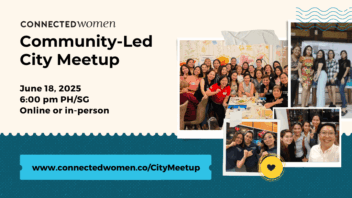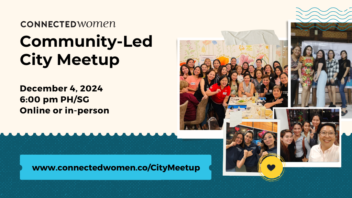10 Tips For A Better, More Responsive Website
 Contributed by
Paul Lim*
September 10, 2015
Contributed by
Paul Lim*
September 10, 2015


Today, we live in the world of the Web. It is common for companies to have websites and about 80% of consumers use the Internet to research a business, product or service before marking a purchase. But what if you do not exist on the Internet?
Establishing a web presence can prevent competitor from poaching your customers and simply setting up an appropriate company website can reel your target audience right in. Whether you provide products or services, a website is a great alternative to physical stores due to its limitless outreach. Nowadays, big ticket items such as cars and houses are being sold online; even services can be made available to everyone all around world.
Websites can also improve customer service. As there is no downtime on the Internet, customers can be updated 24/7 and have their queries answered almost immediately. And what better way to provide them with value-added service than to share handy information on your website? Knowledge sharing is one method to connect with potential customers and eventually convert them into sales.
What is crucial is to build a website with the fundamental capabilities that garner and drive targeted traffic. Here are 10 guidelines to creating an ideal website to attract visitors and generate revenue.
Strong Content Headlines
There are millions of websites in the cyberspace competing for several keywords trying to be recognized as the first hit on search engines, but how exactly do you get people to read what you write?
Although good content and aesthetics are of great value to a website, a strong headline could give your website an edge over others. Pay special attention in crafting catchy and compelling titles for your headline and think out of the box to appeal to consumers and obtain the click-through.
Useful key words that trigger consumer action include Free, Discount, Guaranteed, Incredible Offer, 1 for 1 Promotion, etc. To truly persuade a visitor to constantly return to your website, use question words such as What, Why, When or How as visitors are often looking for answers to their various queries.
Take the subject “Driving A Car” for instance. 3 effective examples are:
- “How to Drive a Car”
- “Why I Love Driving a Car”
- “10 Ways to Drive a Car Effortlessly”
Know Your Target Market
The first step towards recognizing your target market is to have a proper understanding of the problems that your business tackles. Thereafter, identify the groups of people affected by these problems. These individuals will make up your target audience.
Make a list of your target audiences and group them accordingly to categories sure as profession, age, education levels, and gender. Find out how these groups of people may benefit from your products and services by questioning what they lack in their lives and meeting their needs where possible.
Planning for SEO
Google had updated the algorithms to favor responsive web design and mobile device friendliness as a ranking signal recently. Essentially, mobile-device friendly websites have the advantage. They tend to rank higher in search engine results and credibility, so your customers will more likely to spend time browsing and trust your products and services.
Besides responsive web design, a well-thought Keyword & Content strategy is also recommended. You will benefit from more qualified traffic and sales by skillfully incorporating search engine keywords. The potential customers will be able to find your services in unpaid algorithmic search results faster and quicker. Your website will be recognized by major search engines faster, keeping you away from automatically being placed at the bottom of the page.
Increase your online exposure and improve visibility when your website falls on the first page and make it easy for customers to search for the services you offer. You need to upgrade your content regularly to uphold your first page status as the result will increase the sales dramatically by generating hot sales leads from highly targeted website traffic.
Integrate Social Media & Videos
Using Social Media and embedding videos in your content can direct traffic to your website on a regular basis. The inbound links to your website from high-profile social media platforms such as Facebook, Linkedin, YouTube, Twitter, Flickr, Google+ and others will increase your search engine results page ranking.
Consider creating the following social media profiles as outlined
-
- Linkedin – A professional site to showcase expertise and reach out to potential clients based on skills set
- Twitter – A social sharing platform where you can post relevant tips and information with links to corresponding articles on your website
- YouTube – Upload short yet succinct videos to demonstrate useful tutorials and give advice
Always include a link back to an appropriate landing page on your own website and ensure you include a call-to-action on the page, for instance “Retweet” or “Share this Video”
Power Pictures and Graphics
Simplicity and succinctness are key in creating messages that are straightforward to understand. People are often more impacted visually than textually, hence good graphic designs and images are more effective in engaging site visitors compared to text alone. A dynamic picture can drive higher consumer engagement which can lead to higher sales figures.
Provide Impressive Testimonials
Positive and impactful testimonials are excellent for boosting site traffic. If you are in the service industry that replies on customer service and referrals, positive and impactful testimonials that appraise your company’s services will drive greater traffic to your site. For instance, an outdoor event service business could have client testimonials about the excellent service delivery and efficiency.
A Clear Navigation Bar
A clear navigation bar is a plus to any website. Choose simple names for the tabs on the navigation bar and the web pages – logical naming of both tabs and web pages should guide and direct visitors to a specific call to action.
"About Us" Page
The primary purpose of an “About Us” page is to inform the user about your company and what you do. The Page should furnish visitors with the basic background information they need such as the company’s history, awards and achievements as well as social proof and enticing statements that can give your company image a boost.
"Contact Us" Page
Any business that strives to engage its target audience needs to have a feedback channel where those interested in the company’s services or business can contact the relevant people for more information. Sign up for a customized domain email address and phone number and make sure you attend to your calls and answer your emails promptly.
Order Page
The main goal of any e-commerce website is to convert visitors to buying customers. The order confirmation page is usually called a 'Thank You' page.
It is only right to thank your customers each time they complete a payment and more importantly, it helps you maintain healthy relationships and interaction with them, thereby increasing their returns to your site.
Did you enjoy this post? Please comment, like and share!











Sorry, the comment form is closed at this time.